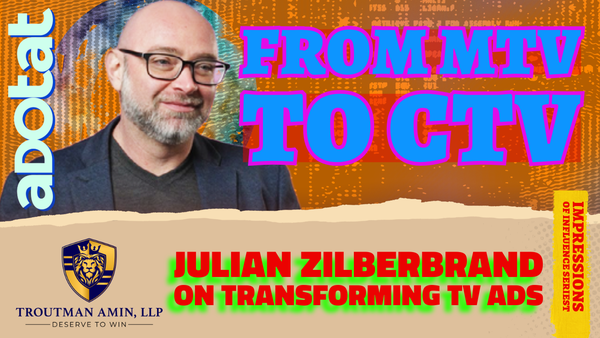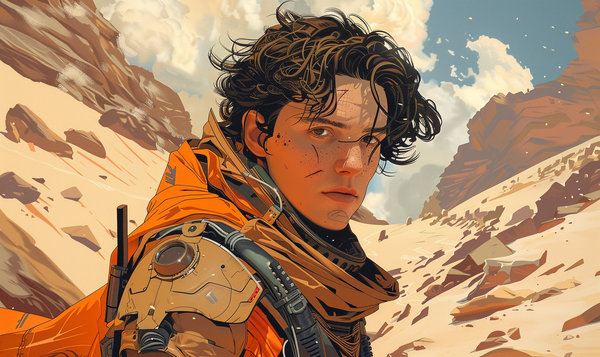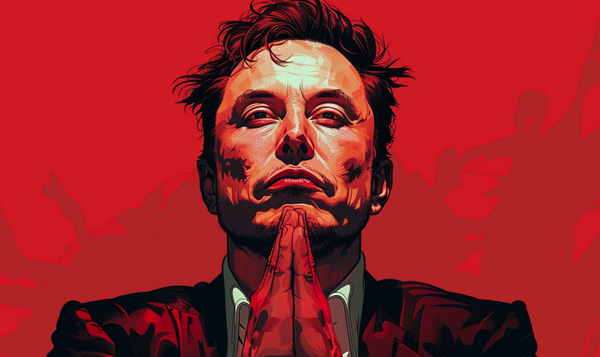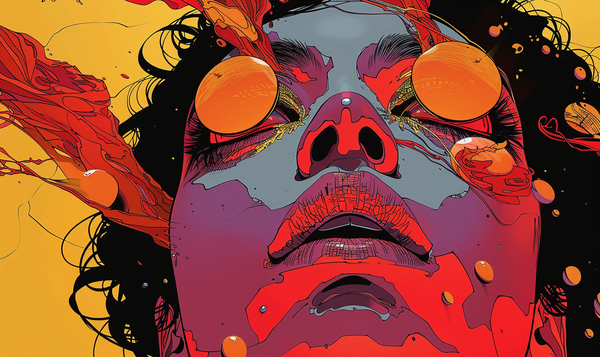TikTok's Ad Exodus: Navigating the Murky Waters of Geopolitical Gambles and Shifting Sands
Oh, how the mighty are faltering! TikTok, once the golden child of digital ad realms, now finds itself in a precarious dance with destiny, sidestepping landmines laid by none other than the U.S. government.
The platform's meteoric rise in the advertising world has hit a snag, a big, regulatory-sized snag. As the figures from MediaRadar reveal, what started as a mere slowdown from a 19% growth in March to a sluggish 6% in May has morphed into a full-blown retreat. The big guns—Target, DoorDash, Bayer, and Procter & Gamble—aren't just trimming their budgets; they're hacking away with abandon. What gives? Let’s unpack this digital drama with a sprinkle of irreverence and a dash of foresight. The trigger, my friends, was as dramatic as the climax of a spy thriller: a presidential signature that put TikTok on a countdown to divestiture or face oblivion in the U.S. market. President Biden's decree, demanding TikTok's parent company ByteDance to sell to a U.S. entity or shut shop, was a plot twist TikTok didn't see coming in its screenplay. The platform’s response? A lawsuit claiming this move is a direct punch to the First
Amendment. Cue the legal battles and a thick cloud of uncertainty settling over advertisers' heads. In the shadowy, uncertain corridors of digital advertising, where whispers of doom travel faster than a viral meme, TikTok finds itself the protagonist in a modern-day Greek tragedy. Advertisers, once zealous patrons of this digital darling, are now recoiling as if they’ve touched a hot stove. The fear? Investing heaps of cash
into what might soon become a barren, digital ghost town. This isn't just cold feet; it's a strategic moonwalk away from potential calamity. "Wait and see," they murmur in the dimly lit conference rooms of media agencies. But let's decode that, shall we? In the lexicon of the cautious and the savvy, "wait and see" is often a polite euphemism for "brace yourselves, the storm’s coming." This isn’t just a hiccup for TikTok—it's a
tremor shaking the very foundations of the digital ad ecosystem. As TikTok's fortunes hang in the balance, jittery ad dollars are fleeing the nest, seeking refuge in safer, perhaps less exhilarating, abodes. Enter stage left: YouTube, Instagram, and Facebook, grinning like Cheshire cats as they lay out a veritable feast of digital delights. They're not just opening their doors; they're rolling out the red carpet, popping the
champagne, and lighting the beacons. These platforms, once seen as the old guard, suddenly shimmer with the allure of safe harbors in the brewing storm. YouTube, the wise old sage of the group, is pulling tricks from its sleeve with new shopping tools and algorithms that promise advertisers not just eyeballs, but engaged, wallet-opening eyeballs. Instagram and Facebook, not to be outdone, have decked their halls with new features so tantalizing, one might forget
the tumultuous winds swirling outside. This isn't merely a shift; it's a technicolor metamorphosis of the advertising landscape. As TikTok's star dims under the harsh glare of geopolitical spotlights, its rivals bask in the glow of newfound attention, painting their offerings in broad, vibrant strokes that promise continuity, stability, and perhaps a dash of excitement in these uncertain times. The lesson here is as old as time but as
fresh as this morning's headlines: change is the only constant, and flexibility is the master key in the ever-twisting labyrinth of digital marketing. As the tectonic plates of media shift beneath our feet, those who adapt with grace—and a flair for the dramatic—will not only survive but thrive. For advertisers, this is not the end of an era but the beginning of a renaissance, a chance to repaint their strategies on a broader canvas, with colors both bold and subtle, in shades of resilience and
innovation. In the grand chessboard of digital advertising, where TikTok has unwittingly become less a king and more a geopolitical pawn—vulnerable, caught between power brokers wielding legislative gavels. The industry must confront this gargantuan
elephant, lounging comfortably in the boardroom: TikTok's fate, swinging like a pendulum with the unpredictable rhythms of political machinations. This isn't just about the whims of millions of users curating dance challenges; it's about the iron fists of policy-making that could squash those viral dreams in a heartbeat. So, what's a savvy marketer to do in such turbulent times? The answer, wrapped in the glittering foil of wisdom, is diversification. Casting your
financial hopes on a single platform is akin to betting on a racehorse galloping on thin ice—thrilling, yes, but perilously risky. The smart money diversifies, spreads its risks across multiple platforms, ensuring that if one falls victim to the capricious tides of geopolitics, the entire campaign doesn't sink with it. Indeed, placing all your eggs in one basket is precarious at best and, at worst, a strategic blunder of titanic proportions. Imagine that basket,
woven not by the hands of fate but by the uncertain, often erratic hands of Uncle Sam—ready to snatch it away on a whim. The wise will scatter their seeds across several fields, knowing that while one might falter, others will flourish. The implications of this are profound. Advertisers and brands must navigate these waters with the agility of a cat and the foresight of an oracle. They must become fluent not only in the language of memes and viral content but also
in the dialects of regulatory landscapes and political climates. It's about constructing a portfolio of platforms, each selected not just for its flashy user base or cutting-edge features, but for its stability, its resilience against the storms of government scrutiny and geopolitical upheaval. This strategic diversification is not just a defensive play; it's a proactive strategy that positions brands to capitalize on opportunities across the spectrum. By spreading
investments, they tap into diverse audience pools, hedge against sudden regulatory changes, and adapt to the ever-evolving digital environment. This approach paints a picture not of retreat, but of smart, dynamic engagement—creating a mosa For brands, the writing on the wall is clear: innovate or perish. TikTok's rivals are not just copying; they are adapting and potentially improving upon
the very features that made TikTok a powerhouse. Brands should be looking to these platforms to diversify their ad spend and to explore new, innovative ways to engage with their audiences. Moreover, this situation underscores the importance of agility in digital strategy. Brands must be ready to pivot, to experiment with new platforms, and to be at the forefront of adopting technologies that align with consumer behaviors which are increasingly fickle. TikTok's current predicament is a case study in how external factors like geopolitical tensions can influence digital marketing strategies. The lesson here is not just about the risk of regulatory changes but about the opportunity it presents for other players in the market. For advertisers, this is a wake-up call to reassess their dependencies and to cultivate a more adaptable, robust approach to digital advertising. As we watch this saga
unfold, let us not just be spectators but active participants in understanding and shaping the future of digital advertising. The question now is not just about who will win this round but about how we can all learn from these upheavals to build a more dynamic and resilient digital marketing landscape. Buckle up (figuratively speaking, of course), it’s going to be a wild ride in the ad world.
|
THREE STORIES THAT YOU NEED TO KNOW in a format that isn't TL:DR summarized for the busy executive
Instagram's latest decree from head honcho Adam Mosseri is clear: no more long-form videos. Mosseri, in his recent Reel, laid down the law that Instagram is all about quick hits and short-form video, framing it as essential for keeping us glued to our screens and sharing with our friends. In his
symbiotic vision, long-form content is the third wheel, making users less engaged and social. The move seems part survival strategy and part identity crisis, as Instagram scrambles to keep up with TikTok's long-play innovations and potential exit from the U.S. market. Creators are split: some bemoan the rise of bite-sized distractions, while others shrug and redirect their epic content to YouTube. As social media platforms evolve in this gladiatorial arena, Instagram is betting its future on
short attention spans.
Angie Hicks is ditching her backstage pass to reclaim the spotlight at Angi, the company she co-founded back in 1995. Stepping up as the brand's "key asset," Hicks is front and center in Angi’s latest ad campaign, Jobs Done Well, spotlighting the unsung heroes of home maintenance. This move is more than a nostalgia trip; it's a strategic push to remind everyone why skilled trades are essential. With her return, Angi is banking on Hicks’ vision to
navigate the tumultuous seas of modern marketing. It's a classic boomerang CEO moment, where the founder steps in not just to keep the ship afloat but to steer it towards innovation and growth.
Shapermint's leap into the AI revolution has slashed production times by 70%, thanks to their in-house tool, Altair, which churns out scripts and storyboards for influencer content. This nifty piece of tech, integrated
with OpenAI and Meta APIs, lets their team whip up what used to be a week’s worth of campaigns in just a day. Despite the flashy promise of generative AI, Shapermint sticks to real footage over AI-generated visuals, ensuring authenticity. This efficiency drive has freed up resources to expand onto platforms like YouTube and Pinterest, while their influencer budget ballooned by 20%. With an annual revenue spike of 35% expected, it's clear that this AI-fueled strategy isn't just smoke and
mirrors—it's a game-changer. Urban Outfitters is giving back-to-school a trendy twist with its “Shift Happens” campaign, aiming to lure in Gen Z
shoppers. Launching on July 10, the campaign cleverly marries digital and physical realms. In partnership with Pinterest, influencers craft stylish, brand-centric boards, which are then showcased in a live, two-day event at The Chelsea Factory in NYC. This interactive blitz not only amplifies the brand’s cool factor but also dangles a $5,000 prize for consumers to manifest their own Pinterest dreams. Urban Outfitters is playing chess while others play checkers, making sure that when
shift happens, they’re ready.
You're looking for an edge in your online marketing. ADOTAT.com is the answer. Our library of resources has been compiled by some of the world's top internet marketing experts, and it's constantly updated with new information, case studies, and
strategies.
We want to help you succeed online - that's why we offer this information for free. It's our way of giving back to the community and helping people achieve their business goals.
Sign up now and gain access to our entire library of
resources!
Want to advertise? Contact pesach@adotat.com |
|
|
The most POWERFUL name in
CIPA AI class action defense and counseling |
The AdTech Adventurer: Myles Younger’s Recipe for Success
If the ad tech industry were weather, it’d be Portland—typically cloudy with a chance of unexpected sunshine. For Myles Younger, a clear morning without the usual downpour is less about meteorological
luck and more a mirror to the unpredictable yet occasionally brilliant world of digital ads. It’s like navigating through fog with a broken GPS—you never know when you’ll hit a pothole or discover a new shortcut. READ MORE NOW
Today, we're delving deep into the dynamic realm of Connected TV (CTV) advertising alongside industry luminary Julian Zilberbrand. With his unparalleled expertise, Julian sheds light on the revolutionary strategies and cutting-edge ad experiences reshaping our streaming interactions. CTV has emerged as a pivotal arena
where traditional television meets digital innovation, offering advertisers unprecedented avenues to engage audiences in meaningful ways. WATCH THIS EPISODE
Paul Atreides’ Guide to CTV: Leading Your Brand Through the Desert of Disruption
In the sprawling, sandy universe of streaming advertising, the problems faced by platforms and advertisers often feel like epic battles straight out of
*Dune 2*. If you’ve seen Denis Villeneuve’s sequel, you’ll understand the complexity, the intrigue, and the constant struggle for balance and control. So, let’s dive into how the streaming ad world is a lot like Arrakis—full of giant challenges and relentless quests for dominance. READ THE STORY
Musk at Cannes: AI Annihilation, Free Speech Crusades, and Ad Begging
Elon Musk, ever the showman, has once again seized the spotlight, blending his apocalyptic AI prophecies with a desperate plea to win back advertisers at the Cannes Lions
Festival. Imagine this: Musk, the tech world’s most notorious provocateur, standing before a crowd of industry bigwigs, dropping truth bombs about AI-induced doom and the moral imperatives of free speech. It’s like watching a dystopian TED Talk crossed with a high-stakes sales pitch, delivered by a man who seems equally comfortable predicting the end of humanity and asking for your ad dollars. READ ENTIRE STORY
Ride and Shine: Uber Drives Membership Growth with Bango’s DVM
In the ever-evolving landscape of digital commerce, where alliances are as critical as innovation, Uber and Bango have unveiled a partnership that reads like a high-stakes chess match in the
game of global subscription services. This move, characterized by its strategic finesse, introduces Uber One to the vast ecosystem of Bango’s Digital Vending Machine® (DVM™), setting the stage for a dramatic expansion of Uber’s membership program. READ MORE
Decoding the DNA of Incrementality
Welcome to the front row seat of a masterclass in ad tech evangelism led by none other than David Pollet, CEO of Incremental. He swung by The ADOTAT Show to spill the real tea on incrementality, not just as a buzzword but
as the cornerstone of modern advertising. Brace yourself for a ride through the labyrinth of advertising metrics, with no turns barred. READ MORE
8 Billion and Counting? The Real Deal with X's Video View Numbers. Ladies and gentlemen, grab your popcorn, because X (formerly Twitter) is back with some eye-popping claims about its video content. They’re shouting from the rooftops that they’re
racking up 8 billion video views per day. Yep, you heard that right—8 billion, with a ‘B’. And just to spice things up, they’re flaunting a 35% increase year-over-year. But before you start planning a ticker-tape parade, let’s break down what’s really going on here. READ MORE
|
|












